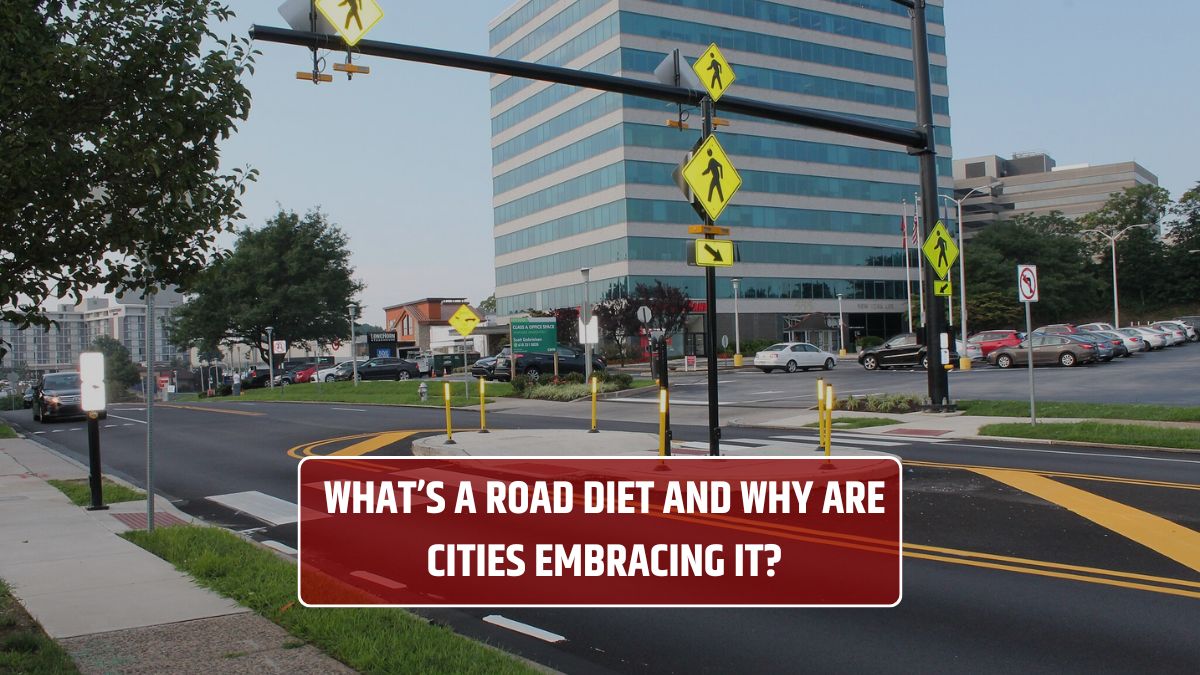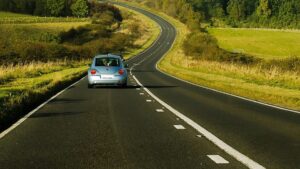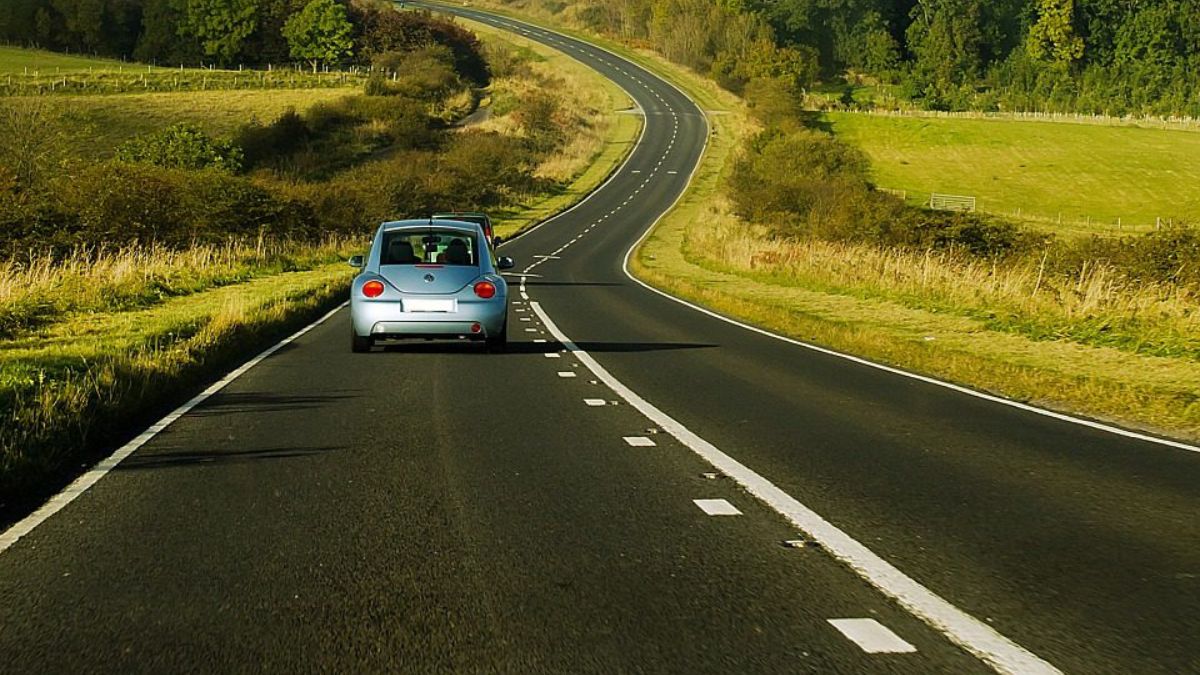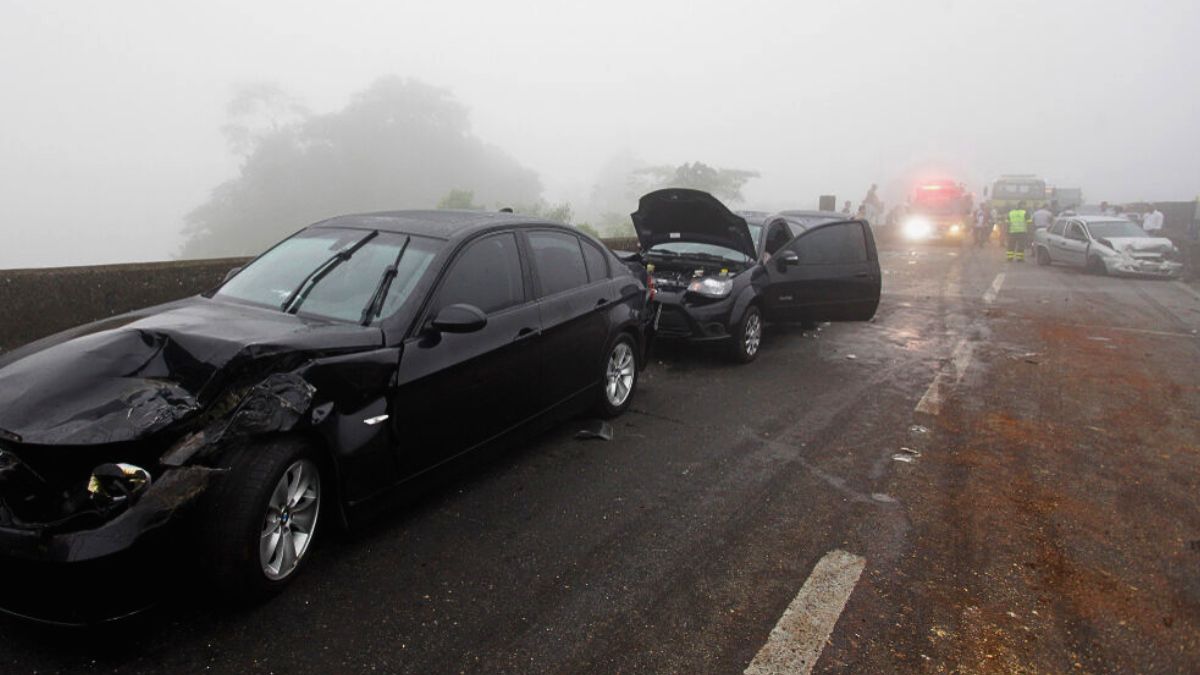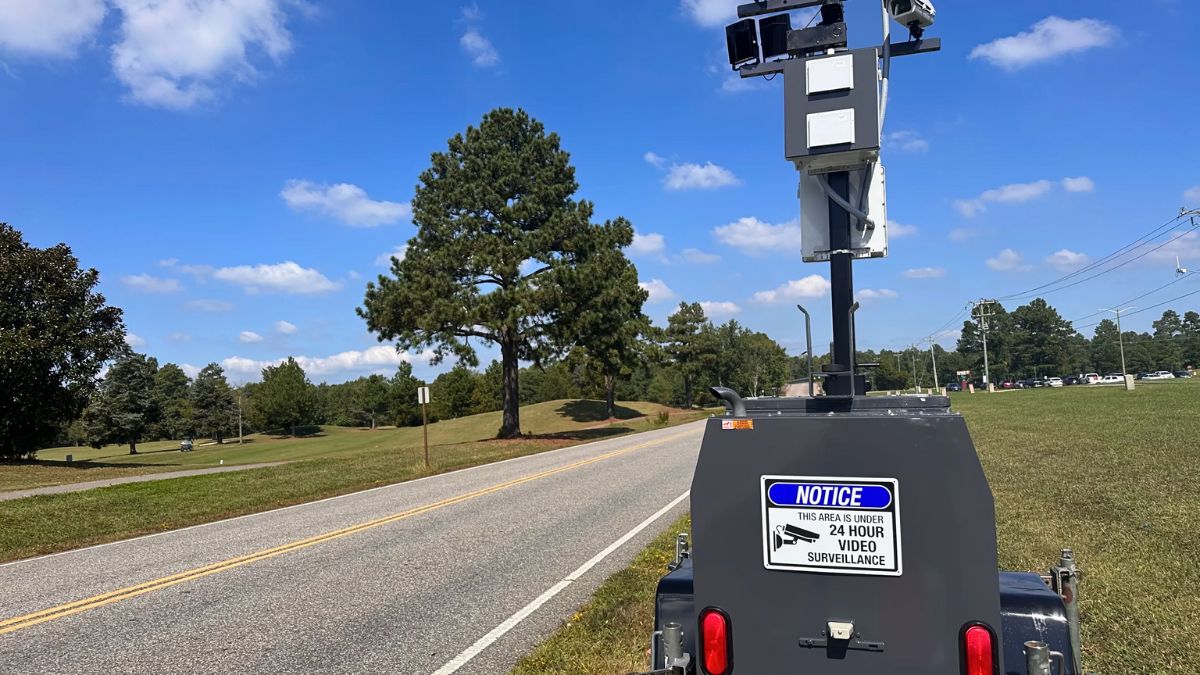Ever drive down a street and wonder why a four-lane road has been shrunk to just two lanes and a turn lane? That’s not a mistake—it’s a “road diet.” Cities across the U.S. and beyond are putting their roads on a health plan, and surprisingly, it’s not about cutting costs. It’s about making streets safer, smarter, and more efficient for everyone—not just drivers.
Let’s cut into what a road diet really is, why cities are trimming the fat, and what that means for you.
Meaning
A road diet is when a city reduces the number of lanes on a street to improve traffic flow, safety, and accessibility. The most common version takes a four-lane road and converts it into three lanes: two for driving and one center lane for turning.
So, where do the “lost” lanes go? They’re usually repurposed for bike lanes, wider sidewalks, or even green space. It’s not about doing less—it’s about doing more with the space we already have.
Purpose
At first glance, narrowing roads might seem like a recipe for more traffic, but studies show the opposite. The main goals of road diets include:
- Reducing crashes by separating turning traffic from through traffic
- Encouraging biking and walking with added lanes and safer sidewalks
- Improving traffic flow by reducing random stops from turning vehicles
- Calming traffic so cars drive at safer speeds in urban areas
A road diet creates a more balanced street for cars, cyclists, and pedestrians alike.
Safety
One of the biggest drivers (pun intended) behind road diets is safety. Roads with multiple lanes in each direction often lead to speeding, sudden lane changes, and risky passing.
When roads are narrowed and designed for multiple users, crash rates typically drop. The Federal Highway Administration found that road diets can reduce crashes by 19% to 47%. That’s huge.
Here’s how safety improves:
| Feature | Impact |
|---|---|
| Fewer lanes | Less lane changing & speeding |
| Center turn lane | Fewer rear-end collisions |
| Bike lanes | More separation from traffic |
| Narrower road width | Drivers slow down naturally |
Benefits
Besides making roads safer, road diets come with a bunch of other perks:
- Lower maintenance costs (fewer lanes to repair)
- Better access for emergency vehicles
- Boost to local businesses (people are more likely to stop, walk, and shop)
- More room for landscaping and stormwater management
- Increased property values along improved streets
It’s a win-win for city planners and residents alike.
Concerns
Still, not everyone’s a fan. Some drivers worry that fewer lanes mean more traffic jams. In areas with very high traffic volumes (typically over 20,000 vehicles per day), a road diet might not work well without additional strategies like traffic signal adjustments or alternative routes.
The key is careful planning and community input. When done right, road diets don’t just work—they work better.
Examples
Plenty of U.S. cities have successfully implemented road diets:
- New York City: Converted several avenues, adding bike lanes and reducing crashes
- Los Angeles: Revamped roadways to support public transit and bike use
- Seattle: Used road diets to calm traffic and improve pedestrian crossings
These aren’t just experiments—they’re long-term improvements with proven results.
Cities are rethinking how roads should work—and who they should serve. A road diet might sound counterintuitive, but it’s a smart strategy to make urban spaces safer, greener, and more livable. When streets invite people to slow down, walk, bike, and share the space, the whole community benefits. Maybe your street’s next on the list?
FAQs
What is a road diet?
A road diet reduces travel lanes to improve safety and flow.
Why do cities use road diets?
To reduce crashes and encourage biking and walking.
Do road diets cause traffic jams?
Not usually, unless traffic volumes are very high.
What’s added in a road diet?
Bike lanes, turn lanes, or wider sidewalks.
Are road diets effective?
Yes, they can cut crashes by up to 47%.
